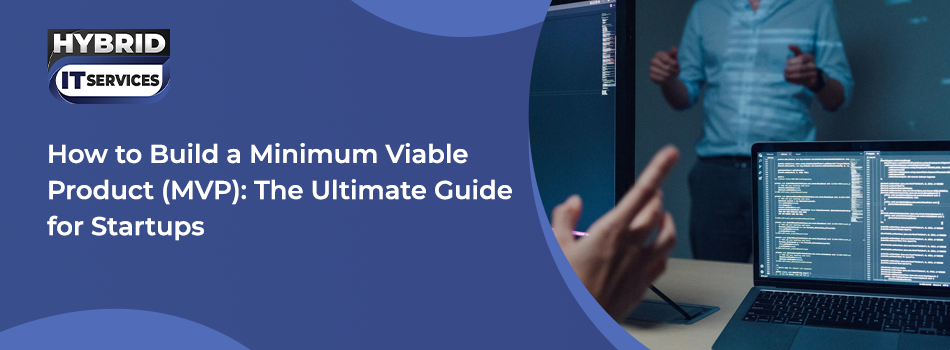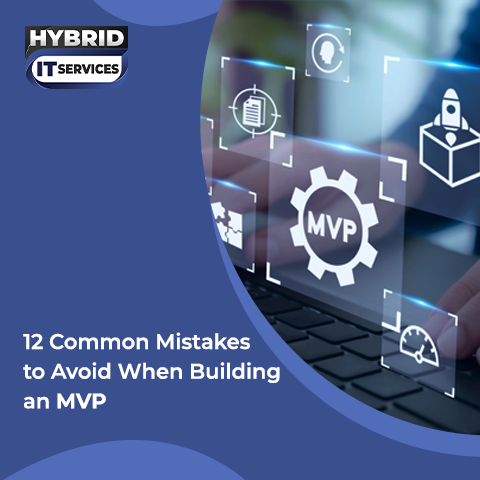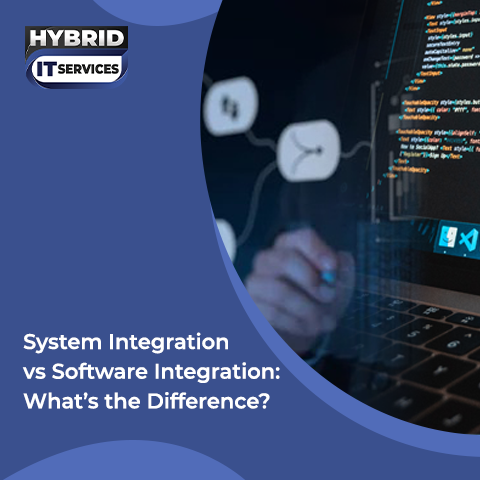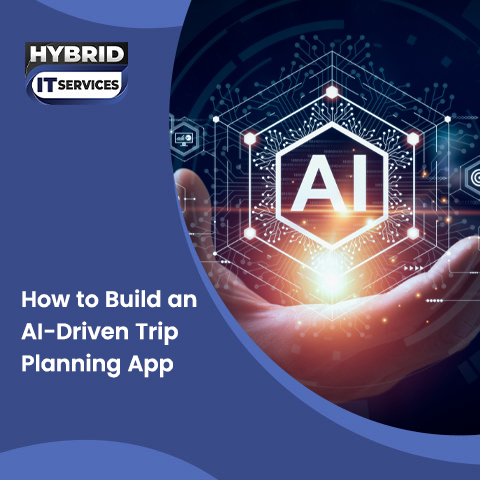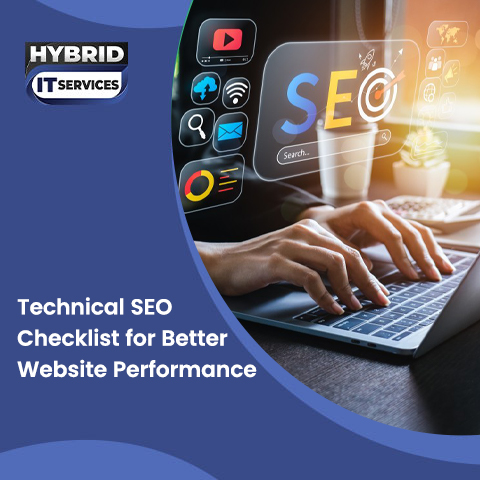Amidst the rapid startup ecosystem, it is no small achievement to release a product that speaks to users and differentiates itself in the marketplace. Startups tend to begin with a great idea and a dream to bring it to life in a digital form. Yet, to take that vision and turn it into a viable, highly realized product takes time, money, and risk. That is where the idea of a Minimum Viable Product (MVP) comes into play.
An MVP is not a bare-bones version of your product; it's a strategic, targeted method for creating only what you need to prove your idea and learn from initial customers. At Hybrid IT Services, we assist startups in launching their MVPs in a manner that strikes the balance between functionality, velocity, and affordability.
At Hybrid IT services, we will look at what an MVP is, why MVP product development is important, and how to build mvp successfully. Let’s see how you can leverage it to guide your startup toward sustainable growth.
Understanding the Concept of Minimum Viable Product
Minimum Viable Product is the bare minimum version of your software product that still has value to deliver to users. It is constructed with essential features that address a niche problem so that you can validate your product idea in the market with minimal investment and effort.
The major objective of an MVP is to learn about real-world usage from early adopters. Rather than shipping a complete application and then crossing fingers, you ship something that works but is bare minimum. You determine how people are using it, listen to feedback, and then you use that to drive further development. That is grounded in lean startup theory, which encourages learning from real user behavior.
Why an MVP development for startups is Important
Creating an MVP is not an exercise in cost-cutting; it's a compelling method of de-risking your product launch. Startups are in situations of uncertainty. You might not have any idea if your target market will accept your concept, if your feature set is the core set of features, or if people will pay for it. An MVP resolves these questions prematurely.
In addition, building an build mvp is evidence of concept to prospective investors. Having a product that works with initial traction has the potential to greatly enhance your likelihood of securing funds in comparison to showing only pitch decks or wireframes.
Step-by-Step Process to Build a Minimum Viable Product
At Hybrid IT Services, we have a systematic process that leads startups step by step through the MVP product development with clarity and intent. Every step ensures your product aligns with your business objectives and customer demands.
Conduct In-Depth Market and User Research
Every good MVP begins with an intimate knowledge of the market and the individuals you wish to serve. You have to know the major pain points that your target users are experiencing before you ever begin to build. Study what already exists out there to discover how people are already addressing those problems and where the holes in the market are.
Your aim here is to find actionable insights. You can survey, interview potential users, read industry reports, and survey competing platforms. All this research informs you about unmet needs, pain areas, and users' expectations for a new solution.
Define and Understand Your Target Audience
After gathering market data, the next step is to establish a unique user group that your MVP will serve. Not all users are equal, and attempting to satisfy everyone in one go will water down your value proposition.
Develop rich user personas that capture your target customer. These personas should detail the demographic profile of the user, goals, pain points, and motivations. By focusing on a specific audience, you guarantee that your MVP is built with clarity and applicability. Having a well-defined user segment also allows you to select the appropriate marketing channels and adapt your messaging.
Develop a Clear and Strong Value Proposition
Your value proposition is the commitment you make to your users. It conveys how your product addresses their problem better or differently than something else.
This is important because your MVP must be all about bringing that essential value. Cut out noise and lesser features. Prioritize what matters most to your users. Ask yourself: What's the problem we're solving? Why should it matter? How are we different?
The questions you answer will determine the building blocks of your MVP and inform your product direction.
Select and Prioritize Core Features
After defining your value proposition, identify the features that are absolutely essential to deliver that value. This step requires discipline and a clear understanding of user priorities.
List all potential features your product might have. Then prioritize them based on their importance to solving the user’s core problem. At this stage, it is helpful to divide features into three categories:
- Essential (must-have features for solving the main problem)
- Secondary (significant but not vital upon release)
- Future improvements (nice-to-have functionalities for subsequent releases)
- There should only be the must-haves included in version one of your MVP.
Establish the Budget, Timeline, and Technical Scope
Having your key features chosen, it is now the time to establish the development plan. Choose how much you are prepared to spend on the MVP and what time frame you are looking at for launch.
Defining budget and timeline boundaries in place keeps the project manageable. It also allows your development team to make sound technical choices, i.e., which platform to adopt, what tech stack to embrace, and whether to develop web, mobile, or both.
In MVP app development, we collaborate closely with clients throughout this phase to suggest efficient, scalable technologies that meet their objectives without complicating the MVP development unnecessarily.
Create a Functional and User-Focused Interface
People will be more likely to leave behind ugly products, even if they address a relevant issue. Begin with low-fidelity wireframes to plan the user flow. Then transition to high-fidelity mockups that include your brand and usability guidelines. Each interaction should be deliberate and consistent with your key use case.
In this phase, it is also crucial to receive early feedback through usability testing. This refines the interface prior to development.
Construct the MVP with an Agile Mindset
With your plan, design, and research set, it is now time to construct your MVP. This needs to be accomplished in a nimble, adaptive environment where the team can respond rapidly to new information or changing priorities.
Development should center on releasing functionality aligned with your scope as determined. Regular testing, code reviews, and sprint retrospectives serve to ensure quality and keep the project on track with user requirements.
Launch, Test, and Learn from Actual Users
With development completed, the MVP is available for release. Onboarding tools, support mechanisms, and analytics to track user activity should be part of your launch plan.
Once launched, attention turns to learning. Monitor how users interact with the product. Are they engaging with features as anticipated? Where are they getting hung up? What feedback are they giving? These findings are priceless. They guide subsequent updates, identify areas where you might improve, and confirm if you're going in the right direction.
Assessing the Success of Your MVP
The success of your MVP does not lie in the number of features it has but in how much you learn and whether your product assumptions are validated. There are two major forms of evaluation: quantitative and qualitative.
Quantitative data contain measures like user retention, active sessions, feature usage, and conversion rates. The numbers guide you as to whether the users find your MVP valuable and the extent of their engagement.
Qualitative data is acquired through surveys, interviews, and direct comments. This provides you with a better understanding of what users enjoy, what annoys them, and what they would like to change.
By blending both methodologies, you can proceed to iterate your product with confidence and rank the correct features for future development.
Examples of MVPs That Turned into Global Brands
Many of today's most prominent technology firms launched with very minimalist MVPs. Their initial versions were designed to do just one thing prove a single concept.
Airbnb started out as a bare-bones website renting a few air mattresses in a living room during a design conference. The founders wished to know whether individuals would pay to sleep in a stranger's home. Dropbox started by releasing a demo video that showed how the software was supposed to work. They still didn't have a functional product at this point—but the feedback confirmed the idea.
Spotify concentrated on a single aspect in its MVP: quick, legal music streaming on the desktop. It had no mobile apps, social sharing, or playlists it simply had a basic player with some licensed tracks. Every single one of these businesses utilized their MVP to learn, hone, and improve gradually.
Constructing Your MVP with Hybrid IT Services
Hybrid IT MVP development company is dedicated to assisting startups in turning ideas into potential digital products. Our MVP creation process should be cooperative, affordable, and results-driven.
From product discovery and UI/UX to backend development and post-launch maintenance, our team is bringing expertise and transparency to each phase of your startup journey. Whether you're testing a concept or poised to scale, we offer the tools and advice needed to support your success.
Conclusion
Launching a startup is hard but building an MVP doesn’t have to be. With the right approach, the right team, and the right strategy, your product can go from concept to launch faster and smarter than ever.
If you're ready to turn your idea into a reality, consult now, Hybrid IT Services is here to help.

